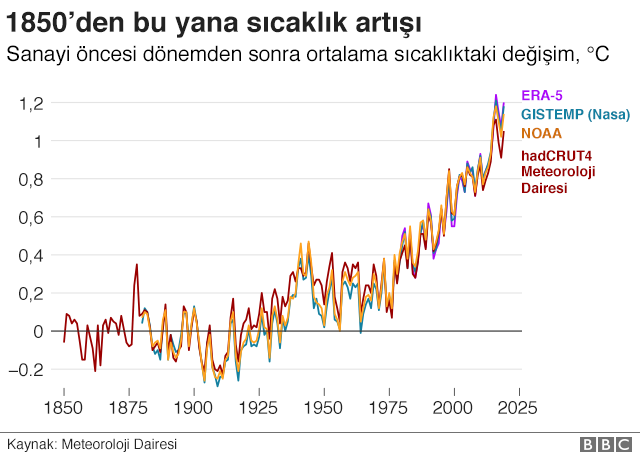Ohio Train Derailment: The Lingering Threat Of Toxic Chemicals In Buildings

Table of Contents
Pathways of Chemical Contamination in Buildings
The Ohio train derailment's impact extends beyond the immediate vicinity, with the potential for toxic chemicals to infiltrate buildings through various pathways. Understanding these pathways is crucial for effective remediation.
Air Contamination
Volatile organic compounds (VOCs), such as Vinyl Chloride, released during the derailment can easily permeate buildings. These VOCs can infiltrate through:
- Ventilation systems: HVAC systems can inadvertently draw contaminated air into buildings.
- Open windows and doors: Homes and businesses near the site may have inadvertently allowed contaminated air inside.
- Cracks and gaps in building structures: Even seemingly minor openings can provide entry points for VOCs.
Long-term exposure to VOCs can lead to severe health problems, including respiratory issues, headaches, nausea, and even cancer. Professional air quality testing is paramount to assess the extent of air contamination and inform necessary remediation strategies, including the use of specialized air filtration systems.
Surface Contamination
Particulate matter and less volatile chemicals released during the derailment can settle on various building surfaces, including:
- Floors: Fine particles can accumulate on flooring materials, potentially creating a long-term contamination source.
- Walls: Chemicals can adhere to wall surfaces, requiring specialized cleaning techniques.
- Furniture: Upholstery and porous materials can absorb chemicals, making thorough cleaning challenging.
Professional cleaning and decontamination services are crucial to remove surface contamination. The materials most likely to retain chemicals, such as porous fabrics and carpets, may require special attention or replacement. The potential for long-term residual contamination necessitates a thorough and professional approach.
Water Contamination
Groundwater and surface water sources may have been affected by the released chemicals, potentially contaminating building water supplies:
- Drinking water: Contaminated water sources can directly impact the drinking water supply of nearby buildings.
- Cleaning and hygiene: Using contaminated water for cleaning can spread contamination throughout the building.
Water testing is essential to determine the extent of contamination. Water filtration systems may be necessary to ensure safe water for drinking and hygiene purposes. Regular monitoring is crucial to guarantee long-term water safety.
Health Risks Associated with Exposure to Toxic Chemicals
Exposure to the toxic chemicals released during the Ohio train derailment poses significant health risks, both short-term and long-term.
Short-Term Effects
Immediate exposure to chemicals like Vinyl Chloride can cause various short-term health effects:
- Respiratory irritation: Coughing, shortness of breath, and wheezing are common symptoms.
- Headaches and dizziness: These can occur due to the effects of inhaled chemicals.
- Nausea and vomiting: These symptoms indicate a more significant level of exposure.
Seeking immediate medical attention is crucial if you experience any of these symptoms after exposure. Urgent care facilities should be contacted without delay.
Long-Term Effects
Long-term exposure to the released chemicals carries potentially serious consequences:
- Increased cancer risk: Many of the chemicals released are known or suspected carcinogens.
- Respiratory problems: Chronic respiratory illnesses, such as asthma and bronchitis, can develop.
- Neurological damage: Some chemicals can cause cognitive impairment and other neurological problems.
- Reproductive health issues: Exposure to certain chemicals can negatively impact reproductive health.
Ongoing research is vital to fully understand the long-term health effects of exposure to the specific chemical mixture released in the Ohio train derailment.
Steps to Mitigate the Threat of Toxic Chemicals in Buildings
Addressing the threat of toxic chemicals in buildings requires a multi-pronged approach.
Professional Remediation
Engaging qualified environmental remediation specialists is non-negotiable:
- Expertise and safety: Professionals possess the expertise and equipment to safely and effectively decontaminate buildings.
- Specialized methods: They employ specialized techniques to remove or neutralize contaminants.
- Safety protocols: They strictly adhere to safety protocols to minimize further exposure risks.
Air Quality Monitoring
Regular air quality monitoring is crucial for assessing the effectiveness of remediation efforts and ensuring ongoing safety:
- Types of testing: Various methods can be employed to detect and quantify airborne contaminants.
- Result interpretation: Professional interpretation of test results is essential to understand the level of risk.
- Frequency of testing: Ongoing monitoring may be necessary, depending on the initial findings and remediation strategies.
Water Testing and Filtration
Testing and filtering water supplies are critical to prevent further exposure:
- Types of water tests: Specific tests are needed to identify the presence of specific contaminants.
- Filtration system selection: Appropriate filtration systems must be selected based on the identified contaminants.
- Ongoing monitoring: Regular water quality monitoring ensures long-term safety.
Conclusion
The Ohio train derailment presents a serious and ongoing threat of toxic chemicals in buildings. The potential pathways of contamination, the associated short-term and long-term health risks, and the importance of professional remediation, air and water quality monitoring cannot be overstated. Proactive steps, including professional testing and remediation, are essential to protect the health and well-being of individuals and communities affected. If you suspect contamination in your building, contact your local authorities or environmental experts immediately for information and assistance regarding toxic chemicals in buildings related to the Ohio train derailment. Resources for obtaining air and water testing are readily available online and through local health departments. Don't delay in safeguarding your family's health – take action today.

Featured Posts
-
 Abd Nin Yeni Politikalari Ve Tuerkiye Trump Doeneminin Sonuclari
May 27, 2025
Abd Nin Yeni Politikalari Ve Tuerkiye Trump Doeneminin Sonuclari
May 27, 2025 -
 Maga Supporters React To Trumps Taylor Swift Statement
May 27, 2025
Maga Supporters React To Trumps Taylor Swift Statement
May 27, 2025 -
 Ecb Baskani Lagarde Yuekselen Ticaret Gerilimleri Ve Enflasyon
May 27, 2025
Ecb Baskani Lagarde Yuekselen Ticaret Gerilimleri Ve Enflasyon
May 27, 2025 -
 Osimhens Manchester United Move Facts And Speculation
May 27, 2025
Osimhens Manchester United Move Facts And Speculation
May 27, 2025 -
 Zac Efrons Brother Dylan A Rising Star Fans Favor Him After The Traitors
May 27, 2025
Zac Efrons Brother Dylan A Rising Star Fans Favor Him After The Traitors
May 27, 2025
Latest Posts
-
 Yesilcam In Zarif Yildizi Guelsen Bubikoglu Nun Son Paylasimi Mine Tugay In Yorumu Dikkat Cekti
May 31, 2025
Yesilcam In Zarif Yildizi Guelsen Bubikoglu Nun Son Paylasimi Mine Tugay In Yorumu Dikkat Cekti
May 31, 2025 -
 Busana Miley Cyrus Ekspresi Berbagai Cerita
May 31, 2025
Busana Miley Cyrus Ekspresi Berbagai Cerita
May 31, 2025 -
 The Miley Cyrus Billy Ray Cyrus Rift Social Media Weighs In
May 31, 2025
The Miley Cyrus Billy Ray Cyrus Rift Social Media Weighs In
May 31, 2025 -
 Guelsen Bubikoglu Nun Guencel Goeruentuesue Yesilcam In Unutulmaz Guezeli Buguen Nasil Goeruenueyor
May 31, 2025
Guelsen Bubikoglu Nun Guencel Goeruentuesue Yesilcam In Unutulmaz Guezeli Buguen Nasil Goeruenueyor
May 31, 2025 -
 Miley Cyrus Relationship With Billy Ray Cyrus Public Fallout And Family Discord
May 31, 2025
Miley Cyrus Relationship With Billy Ray Cyrus Public Fallout And Family Discord
May 31, 2025
